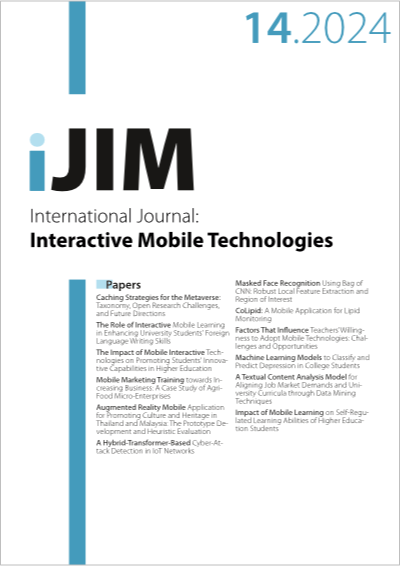Caching Strategies for the Metaverse: Taxonomy, Open Research Challenges, and Future Directions
DOI:
https://doi.org/10.3991/ijim.v18i14.47269Keywords:
metaverse, Web3.0, Caching Strategy, Mobile caching, IOT cachingAbstract
The metaverse, which is considered to be the next evolutionary stage of the Internet, has captured the attention of both academia and industry. Its primary goal is to establish a shared 3D virtual space that interconnects all virtual worlds through the Internet. In this shared space, users are represented as digital avatars, enabling them to communicate, interact with each other, and engage with the virtual environment as if they were in the physical world. However, realizing the full potential of the metaverse poses significant challenges, such as the requirement for higher throughput compared to current social VR platforms and the need to minimize latency to just a few milliseconds to uphold a truly immersive user experience. Caching is a critical aspect of optimizing data access on the current Internet, and it is equally crucial for addressing similar challenges in Web 3.0 and the metaverse. This paper explores different caching strategies suggested to address these challenges on the current Internet and assesses their potential relevance to the metaverse. Caching strategies are categorized into three groups: web caching, mobile caching, and Internet of Things (IoT) caching. Recent solutions are then examined to determine their relevance to the metaverse. Finally, the paper discusses open research challenges and potential future research directions in this domain.
Downloads
Published
How to Cite
Issue
Section
License
Copyright (c) 2024 Alaa Hamid Mohammed, Adib Habbal

This work is licensed under a Creative Commons Attribution 4.0 International License.



